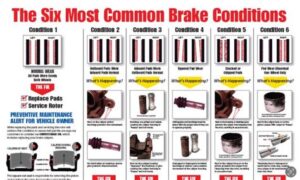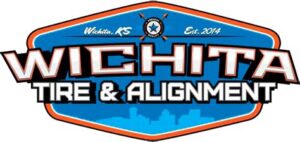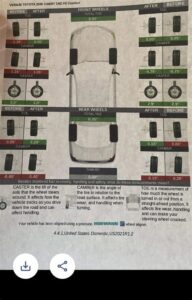When you invest in a professional alignment for your car, you expect seamless steering and a smooth ride. However, encountering a situation where your vehicle pulls to one side post-alignment can be both frustrating and concerning. Understanding the underlying issues that cause this phenomenon is crucial for maintaining your vehicle’s performance and safety. In this article, we’ll explore common causes of car pulling after alignment, the importance of inspecting tire pressure, and how suspension issues contribute to the problem. Moreover, we’ll highlight the significance of professional alignment services in preventing such occurrences and provide essential steps to resolve any pulling issues. Join us as we guide you through the ins and outs of ensuring your car drives straight and true.
Understanding Car Pulling After Alignment: Common Causes
Car pulling to one side after alignment can be a frustrating experience for many drivers. It not only affects driving comfort but can also compromise safety. Understanding the common causes behind this phenomenon is critical for timely resolution. Here are some frequent culprits:
| Common Cause | Description |
|---|---|
| Tire Wear | Uneven tire wear can lead to inconsistencies in handling, causing the car pulling to one side. |
| Misalignment | Even after a professional alignment, slight misalignments can occur due to road conditions or improper adjustments. |
| Brake Issues | A stuck caliper or uneven braking can create drag, leading to a noticeable drift in the direction of the affected wheel. |
| Suspension Problems | Worn-out suspension components can lead to improper handling dynamics, contributing to the car pulling. |
| Wheel Balance | If wheels are unbalanced, it can affect the stability of the vehicle, resulting in a pull to one side. |
By identifying these common causes, drivers can better understand why their vehicle exhibits car pulling behavior and take appropriate action to address the issue.
Inspecting Tire Pressure to Prevent Car Pulling
One of the critical factors in ensuring that your vehicle travels in a straight line without any car pulling to one side is maintaining the correct tire pressure. Underinflated or overinflated tires can lead to uneven wear and poor handling, which may exacerbate any alignment issues. Therefore, it’s essential to regularly check your tire pressure as part of your vehicle maintenance routine.
Here are steps to inspect and maintain proper tire pressure:
By regularly inspecting tire pressure, you can help prevent situations that may lead to car pulling after an alignment adjustment. Maintaining the correct tire pressure not only improves the handling of your vehicle but also enhances tire lifespan, ensuring a safer and more comfortable driving experience.
How Suspension Issues Contribute to Car Pulling
One of the critical factors that can lead to car pulling to one side after an alignment is the condition of the vehicle’s suspension system. The suspension is responsible for maintaining the vehicle’s stability, handling, and overall comfort while driving. When suspension components are worn or damaged, they can significantly affect the alignment and directional control of the car.
Common suspension issues that may cause car pulling include:
- Worn Out Shock Absorbers or Struts: These components help absorb road imperfections. If they are worn, the car may bounce excessively, leading to uneven tire wear and pulling.
- Bad Ball Joints: Ball joints connect the wheel hubs to the control arms. If they are worn, they can cause instability and misalignment, resulting in car pulling.
- Misaligned Control Arms: Control arms play a crucial role in maintaining the alignment of the tires. If they are bent or damaged, it can cause the wheels to be misaligned, leading to pulling.
- Damaged Bushings: Bushings are used to cushion various suspension components. If these are worn out, they can lead to excessive movement in the suspension system, causing alignment issues and pulling.
Regular inspection and maintenance of the suspension system are essential for preventing issues that lead to car pulling. If you suspect that your suspension may be causing problems, it’s advisable to consult a professional mechanic who can diagnose and fix the issue effectively.
The Importance of Professional Alignment to Avoid Car Pulling
Ensuring your vehicle undergoes a professional wheel alignment is crucial for maintaining its performance and safety. Proper alignment not only enhances the vehicle’s handling but also significantly reduces the likelihood of car pulling issues that can arise post-alignment.
When the wheels are not aligned correctly, several adverse effects can occur:
| Consequences of Poor Alignment | Description |
|---|---|
| Vehicle Drift: |
Your car may drift to one side, making it challenging to maintain a straight path. |
| Tire Wear: |
Uneven tire wear can lead to premature tire replacement, increasing your overall maintenance costs. |
| Handling Issues: |
Poor alignment often results in a lack of responsiveness in the steering, making it harder to control the vehicle. |
| Braking Performance: |
Incorrect alignment can negatively impact braking efficiency, posing a safety risk on the road. |
To mitigate the risks associated with car pulling, it’s wise to seek the expertise of a certified automotive technician. They can accurately assess the alignment settings, ensuring that each wheel is positioned correctly according to the manufacturer’s specifications.
Investing in a professional alignment not only enhances the overall driving experience but also prolongs the life of your tires and suspension components. Regular checks, particularly if you notice any signs of car pulling, can prevent minor issues from escalating into major problems.
Steps to Resolve Car Pulling After Alignment
If your vehicle is experiencing car pulling issues even after having the alignment done, there are several steps you can take to diagnose and resolve the problem. Here are practical steps you can follow:
- Check Tire Pressure: Ensure all tires are inflated to the manufacturer’s recommended pressure. Uneven tire pressure can lead to car pulling.
- Inspect Tires for Wear: Check for uneven tread wear or damaged tires. Replace or rotate worn tires as necessary to ensure uniformity.
- Examine Suspension Components: A thorough inspection of the suspension system, including struts, springs, and control arms, can reveal underlying issues that may contribute to car pulling.
- Assess Steering Alignment: Confirm the steering alignment settings. Sometimes, even after an alignment service, precise adjustments are necessary to maintain straight tracking.
- Visit a Professional: If the problem persists after these checks, consult a qualified mechanic. They can perform a comprehensive diagnosis to identify any unseen issues affecting your vehicle.
By following these steps, you can help mitigate any ongoing car pulling issues, ensuring a safer and more enjoyable driving experience.
Frequently Asked Questions
What causes a car to pull to the right after an alignment?
Several factors can cause a car to pull to the right even after a proper alignment, including uneven tire pressure, worn suspension components, or issues with the steering system.
How can I check if my tire pressure is causing the pull?
You can check your tire pressure using a tire pressure gauge. Make sure all tires are inflated to the manufacturer’s recommended pressure, which is usually found on a sticker inside the driver’s door.
Is it necessary to get a wheel alignment after replacing tires?
Yes, it is generally recommended to have a wheel alignment after replacing tires to ensure they wear evenly and provide optimal handling.
Can worn suspension components cause a car to pull to the right?
Absolutely. Worn or damaged suspension parts, such as bushings or control arms, can lead to misalignment and cause your vehicle to pull to one side.
Should I take my car back to the alignment shop if it pulls to the right?
Yes, it’s advisable to return to the alignment shop to discuss the issue, as they may need to recheck the alignment or identify other problems.
Can road conditions affect how my car drives after an alignment?
Yes, uneven road conditions such as potholes or road camber can affect your car’s handling and might contribute to pulling even after an alignment.
How often should I get a wheel alignment to prevent pulling issues?
It’s a good practice to have your wheel alignment checked at least once a year or whenever you notice uneven tire wear or if your car pulls to one side.





